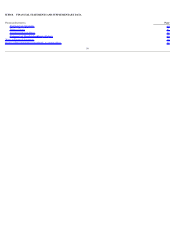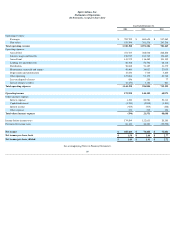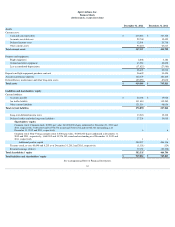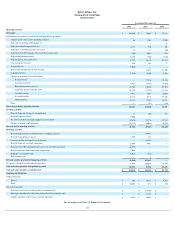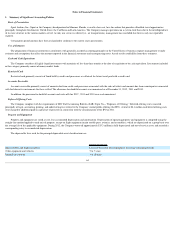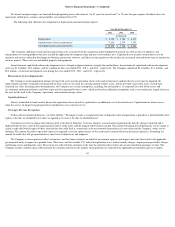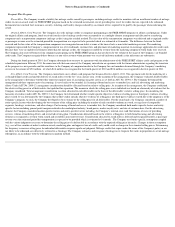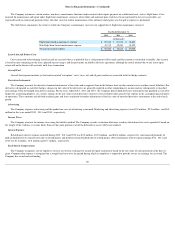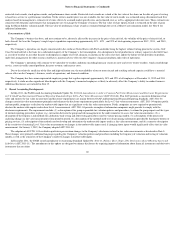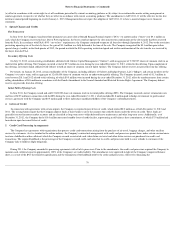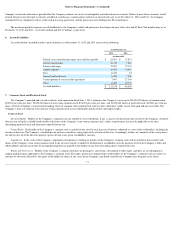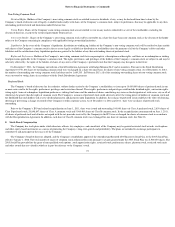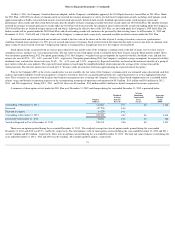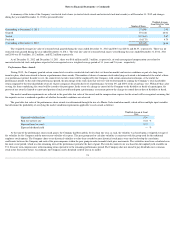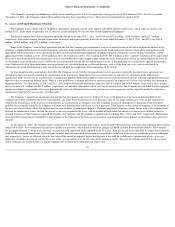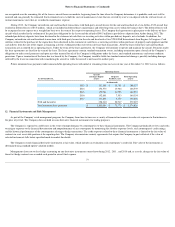Spirit Airlines 2012 Annual Report Download - page 69
Download and view the complete annual report
Please find page 69 of the 2012 Spirit Airlines annual report below. You can navigate through the pages in the report by either clicking on the pages listed below, or by using the keyword search tool below to find specific information within the annual report.
Notes to Financial Statements—(Continued)
The Company outsources certain routine, non-heavy maintenance functions under contracts that require payment on a utilization basis, such as flight hours. Costs
incurred for maintenance and repair under flight hour maintenance contracts, where labor and materials price risks have been transferred to the service provider, are
expensed based on contractual payment terms. All other costs for routine maintenance of the airframes and engines are charged to expense as performed.
The table below summarizes the extent to which the Company’s maintenance costs are rate capped due to flight hour maintenance contracts:
Leased Aircraft Return Costs
Costs associated with returning leased aircraft are accrued when it is probable that a cash payment will be made and that amount is reasonably estimable. Any accrual
is based on time remaining on the lease, planned aircraft usages, and the provisions included in the lease agreement, although the actual amount due to any lessor upon
return will not be known with certainty until lease termination.
Aircraft Fuel
Aircraft fuel expense includes jet fuel and associated “into-plane” costs, taxes, oil, and all gains and losses associated with fuel hedge contracts.
Derivative Instruments
The Company accounts for derivative financial instruments at fair value and recognizes them in the balance sheet in other current assets or other current liabilities. For
derivatives designated as cash flow hedges, changes in fair value of the derivative are generally reported in other comprehensive income and are subsequently reclassified
into earnings when the hedged item affects earnings. For the years ended 2012 , 2011 and 2010
, the Company did not hold derivative instruments that qualified as cash flow
hedges for accounting purposes. As a result, changes in the fair value of such derivative contracts were recorded within aircraft fuel expense in the accompanying statements
of operations. These amounts include both realized gains and losses and mark-to-market adjustments of the fair value of unsettled derivative instruments at the end of each
period.
Advertising
The Company expenses advertising and the production costs of advertising as incurred. Marketing and advertising expenses were $2.4 million , $2.5 million , and
$4.0
million for the years ended 2012 , 2011 and 2010 , respectively.
Income Taxes
The Company accounts for income taxes using the liability method. The Company records a valuation allowance to reduce the deferred tax assets reported if, based on
the weight of the evidence, it is more likely than not that some portion or all of the deferred tax assets will be not realized.
Interest Expense
Related-party interest expense incurred during 2012 , 2011 and 2010 was $0.0 million , $21.0 million , and $44.6 million , respectively, and consisted primarily of
paid-in-kind interest on tranche notes due to related parties and preferred stock dividends due to related parties. Non-related party interest expense during 2012 , 2011 and
2010 was $1.4 million , $3.8 million and $5.7 million , respectively.
Stock-Based Compensation
The Company recognizes cost of employee services received in exchange for awards of equity instruments based on the fair value of each instrument at the date of
grant. Compensation expense is recognized on a straight-line basis over the period during which an employee is required to provide service in exchange for an award. The
Company has issued and outstanding
68
Year Ended December 31,
2012
2011
2010
(in thousands)
Flight hour-based maintenance expense
$
25,748
$
21,974
$
16,683
Non-flight hour-based maintenance expense
23,712
12,043
10,352
Total maintenance expense
$
49,460
$
34,017
$
27,035



